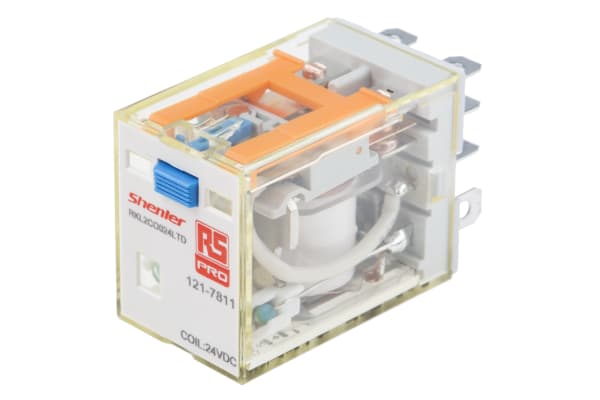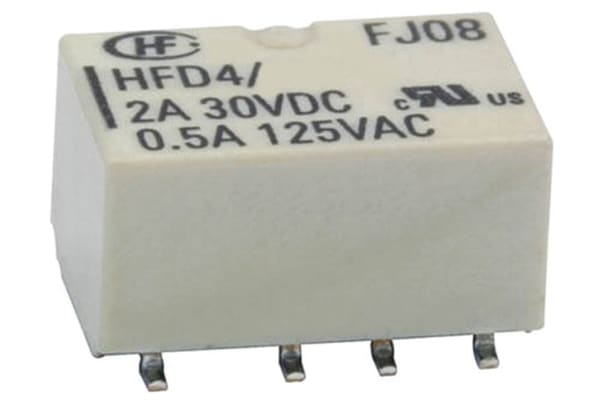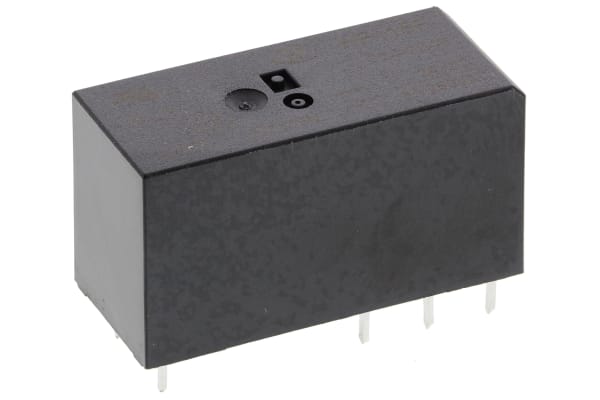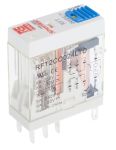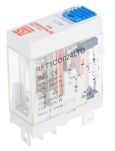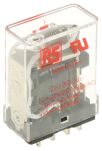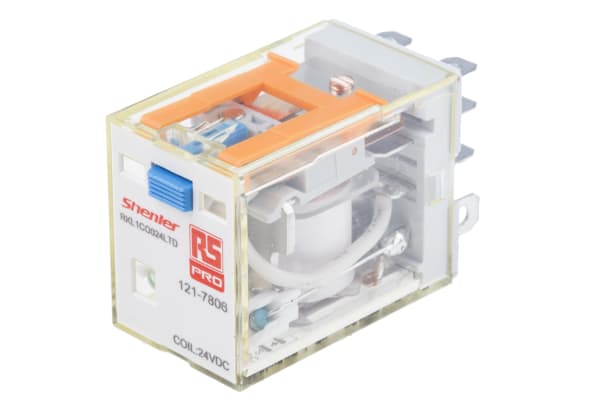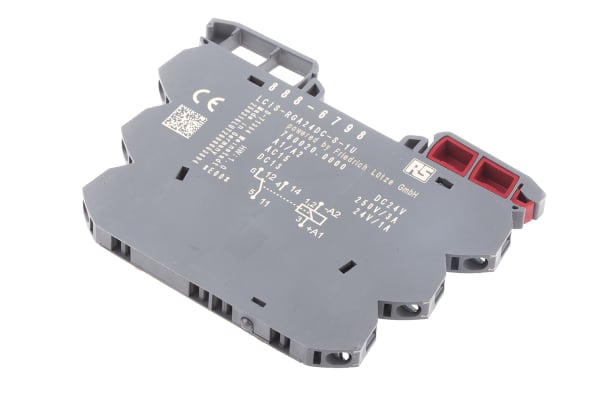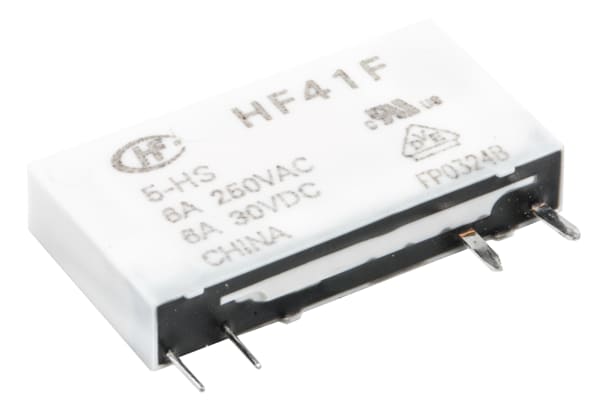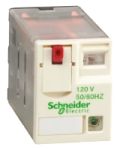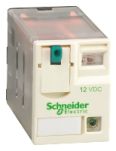Non-Latching Relays
Relays are electrical switches that are operated by electrical impulses with the primary function to open and close a circuit, they can also be referred to as industrial switches. There are 2 main types available, latching and non–latching relays.How do non-latching relays work?Non-latching relays are in a normally closed (NC) position and will stay in this state without power. When power passes through the circuit, the relay switched to a normally open (NO) position by using an internal coil to generate a magnetic force, holding this NO position. Once the current is turned off, it returns to the NC position. This makes non-latching relays well suited to push-button applications like keyboards and micro-controller input buttons.What are non-latching relays used for?Non-latching relays are highly durable and versatile components, making their performance long lasting and suitable for use in a wide range of applications, such as:Automotive enginesHousehold appliancesIndustrial machineryMedical equipmentTelecommunications equipmentWhat is the difference between latching and non-latching relays?Both types of relays in similar in design and function, however, a significant difference between them is that a latching relay will remain in the last position it when it was last powered, whereas a non-latching goes back to its normal position. This makes each more type of relay suitable for different applications. Considerations when selecting a relayWhen choosing a relay, it is important to consider a number of specifications to ensure it is fit for purpose, some factors include:Coil voltage – the required voltage to actuate the switching mechanism. If a voltage is too high this could damage the components, if it is too low then it will not actuate. Contact configuration – This is the state the contacts are in without power. For example SPST, single pole single throw.Contact material – the relay contacts are available in many materials that have certain properties. Common materials are gold, silver, tin oxide and nickel Coil power – the amount of power (watts) the coil operates at. This must match the power in the circuit for correct function. Coil resistance – the amount of resistance (ohms) in the circuit that the coil creates.
-
RS PRO, 24V dc Coil Non-Latching Relay DPDT, 10A Switching Current Plug In, 2 Pole
IDR156,286.10 -
RS PRO, 24V dc Coil Non-Latching Relay DPDT, 10A Switching Current Plug In, 2 Pole
IDR201,808.36 -
RS PRO, 24V dc Coil Non-Latching Relay DPDT, 2A Switching Current PCB Mount, 2 Pole
IDR60,941.09 -
RS PRO, 24V dc Coil Non-Latching Relay DPDT, 8A Switching Current PCB Mount, 2 Pole
IDR58,004.17 -
RS PRO, 24V dc Coil Non-Latching Relay DPDT, 8A Switching Current Plug In, 2 Pole
IDR127,756.02 -
RS PRO, 24V dc Coil Non-Latching Relay SPDT, 10A Switching Current PCB Mount Single Pole
IDR103,631.32 -
-19.00%
RS PRO, 24V dc Coil Non-Latching Relay SPDT, 10A Switching Current Plug In Single Pole
IDR136,671.67IDR89,995.62 -
RS PRO, 24V dc Coil Non-Latching Relay SPDT, 15A Switching Current PCB Mount Single Pole
IDR105,519.34 -
RS PRO, 24V dc Coil Non-Latching Relay SPDT, 15A Switching Current Socket Mount Single Pole
IDR161,740.38 -
RS PRO, 24V dc Coil Non-Latching Relay SPDT, 16A Switching Current PCB Mount Single Pole
IDR64,192.68 -
RS PRO, 24V dc Coil Non-Latching Relay SPDT, 16A Switching Current Plug In Single Pole
IDR166,040.87 -
RS PRO, 24V dc Coil Non-Latching Relay SPDT, 6A Switching Current DIN Rail Single Pole
IDR1,036,627.87Pack (1 Pack of 5) -
RS PRO, 24V dc Coil Non-Latching Relay SPST, 6A Switching Current PCB Mount Single Pole
IDR75,835.47 -
RS PRO, 36V Coil Non-Latching Relay 4PDT, 2A Switching Current PCB Mount, 4 Pole
IDR797,268.89 -
RS PRO, 48V dc Coil Non-Latching Relay DPDT, 10A Switching Current PCB Mount, 2 Pole
IDR71,639.87 -
RS PRO, 5V dc Coil Non-Latching Relay DPDT, 2A Switching Current PCB Mount, 2 Pole
IDR63,982.90 -
RS PRO, 5V dc Coil Non-Latching Relay SPDT, 2A Switching Current PCB Mount Single Pole
IDR39,543.53 -
RS PRO, 5V dc Coil Non-Latching Relay SPST, 6A Switching Current PCB Mount Single Pole
IDR61,675.32 -
RS PRO, 6V dc Coil Non-Latching Relay SPDT, 10A Switching Current PCB Mount Single Pole
IDR43,529.35 -
Schneider Electric, 110V dc Coil Non-Latching Relay 3PDT, 10A Switching Current Plug In, 3 Pole, RXM3AB2FD
IDR198,137.21 -
Schneider Electric, 120V ac Coil Non-Latching Relay 4PDT, 3A Switching Current Plug In, 4 Pole, RXM4GB2F7
IDR203,591.49 -
Schneider Electric, 120V ac Coil Non-Latching Relay 4PDT, 8A Switching Current Plug In, 4 Pole, RXM4AB2F7
IDR201,703.47 -
Schneider Electric, 125V dc Coil Non-Latching Relay 4PDT, 8A Switching Current Plug In, 4 Pole, RXM4AB2GD
IDR201,913.25 -
Schneider Electric, 12V dc Coil Non-Latching Relay 4PDT, 3A Switching Current Plug In, 4 Pole, RXM4GB2JD
IDR130,378.27



